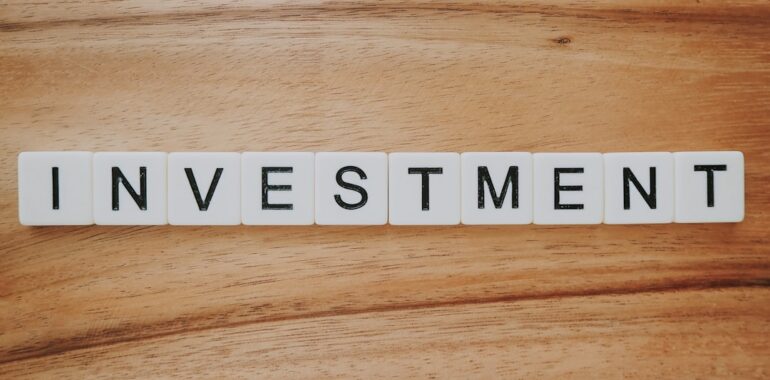31 Pitch Deck Examples: Best & Worst Templates to Secure Investor Funding

Meta Description: Explore 31 pitch deck examples, including the best and worst templates, to help you create an effective presentation that attracts investors.
Creating a compelling investor pitch deck is a crucial step for any startup seeking funding. Your pitch deck serves as the first impression investors have of your business, making it essential to get it right. In this guide, we’ll explore 31 pitch deck examples, highlighting the best and worst templates to help you secure investor funding effectively.
Why Your Pitch Deck Matters
A well-designed pitch deck can make the difference between securing investment and being overlooked. It’s not just about showcasing your business idea but also about demonstrating your understanding of the market, your strategy, and your potential for growth. Investors look for clarity, conciseness, and a compelling narrative that aligns with their investment criteria.
Best Pitch Deck Examples
1. Airbnb
Airbnb’s pitch deck is a stellar example of simplicity and clarity. They effectively communicated their value proposition with minimal text and strong visuals, making it easy for investors to grasp their business model quickly.
2. Nutanix
Despite some flaws in their presentation, Nutanix managed to secure significant funding by focusing on their innovative technology and market potential. Their clear milestones and funding stages provided transparency and built investor confidence.
3. Cadee
Cadee’s pitch deck stands out for its straightforward approach. By clearly defining what the company does without overwhelming details, they kept the focus on their core offering, making it easy for investors to understand and get excited about their vision.
4. Opendoor
Opendoor’s deck excels in highlighting the problem they solve and the market opportunity. Their use of compelling metrics and a clean design helps convey trust and potential effectively.
5. Carta
Carta’s pitch deck is notable for its honest presentation of metrics, including both positive and negative data. This transparency fosters trust and shows a deep understanding of their business landscape.
Worst Pitch Deck Examples
1. Moz (2012)
Moz’s pitch deck was cluttered with unnecessary information, making it difficult for investors to identify key points. The overly complex timeline distracted from the main message, highlighting the importance of simplicity.
2. Square (2011)
Square’s presentation suffered from confusing visuals and poorly aligned elements. The lack of a clear value proposition made it hard for investors to understand what Square was offering, emphasizing the need for a focused narrative.
3. Buffer (2011)
Buffer’s use of complex cycles and unclear competitor analysis confused investors. Effective pitch decks should present competitors and market position in a straightforward manner to maintain investor interest.
4. Standard Treasury (2014)
This deck featured unreadable text and ambiguous financial projections. Clear and legible content is essential to prevent confusion and convey your business’s financial health accurately.
5. Foursquare (2009)
Foursquare’s verbose descriptions and irrelevant details hindered understanding. Pitch decks should avoid lengthy explanations and focus on concise, impactful information.
Common Pitfalls in Investor Pitch Decks
- Complex Concepts: Avoid overcomplicating your presentation. Focus on clear, understandable concepts that convey your business idea effectively.
- Unreadable Text: Ensure all text is legible. Investors should effortlessly read and comprehend your content without straining.
- Confusing Visuals: Use visuals that enhance understanding, not detract from it. Clean and simple graphics support your narrative without causing distraction.
- Too Wordy: Keep your content concise. Use bullet points and short sentences to convey key information efficiently.
- Audience-Not-In-Mind: Tailor your pitch deck to your audience. Understand what investors are looking for and present information that addresses their interests.
- Lots of Buzzwords: Minimize the use of jargon. Clear and straightforward language resonates better with investors.
- Unusual Metrics: Present clear and relevant metrics. Transparency in your data builds trust and credibility.
- Ego Flaunting: Focus on your team’s qualifications and expertise rather than personal accolades. Investors are interested in your ability to execute, not your personal image.
- No Demo Videos: Avoid relying on demo videos. Use screenshots or product mockups to showcase your product without technical glitches.
- Snoozefest: Make your pitch engaging. A dynamic and interesting presentation keeps investors attentive and interested.
Lessons from 31 Pitch Deck Examples
By analyzing 31 pitch decks, we can glean valuable insights into what works and what doesn’t. The best pitch decks are those that:
- Tell a Compelling Story: They engage investors with a clear narrative that highlights the problem, solution, and market opportunity.
- Use Clear and Simple Design: Minimalist designs with clear visuals make the deck easy to follow.
- Highlight Key Metrics: Transparent and relevant metrics showcase the business’s potential and reassure investors.
- Focus on the Team: Demonstrating a strong, capable team instills confidence in the startup’s ability to execute its vision.
- Maintain Conciseness: Keeping information brief and to the point ensures that the presentation is impactful and memorable.
Creating Your Effective Pitch Deck
When designing your investor presentation template, keep these key principles in mind:
- Clarity: Ensure that every slide communicates a specific point without unnecessary complexity.
- Visual Appeal: Use professional and clean visuals that support your message.
- Relevance: Tailor your content to address what investors care about, such as market size, business model, and growth potential.
- Transparency: Be honest about your metrics and potential challenges. Transparency builds trust.
- Engagement: Make your presentation engaging with a strong narrative and impactful visuals.
Conclusion
A successful investor pitch deck is a blend of compelling storytelling, clear design, and transparent metrics. By learning from the best and avoiding the pitfalls highlighted in the worst examples, you can create an investor presentation template that stands out and attracts the funding you need to grow your startup.
Ready to take your pitch deck to the next level? Visit TOPY.AI to explore our AI-powered tools designed to help you create effective and engaging investor presentations.




